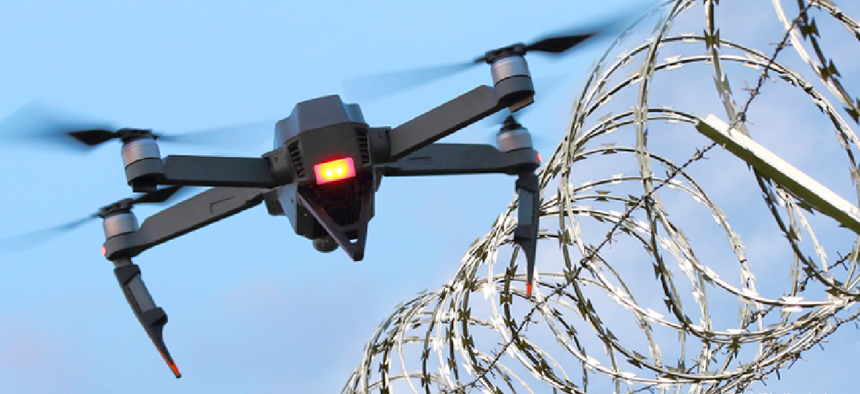Drones detection tech helps fight contraband in prisons


Connecting state and local government leaders
As drones are increasing being used to smuggle drugs, weapons or phones into prisons, officials are looking to technology to help them detect the unmanned aerial systems.
As drones are increasing being used to smuggle drugs, weapons or phones into prisons, officials are looking to technology to help them detect the unmanned aerial systems.
There are a few basic ways to detect a drone. A system can use cameras to spot the drone, acoustic sensors that hear the drone coming or sensors that pick up the drone’s radio frequency, according to Linda Ziemba, the CEO of AeroDefense, the firm behind AirWarden, a counter-UAS solution.
AirWarden uses radio frequency sensors located around a facility to identify the location of both the drone and the flight controller by detecting either the drone is communicating to the controller. The detection distance depends on the surrounding environment; if the environment is crowded with buildings or trees then the distance at which the drone will be detected will be shorter. “RF doesn’t need direct line of sight, however, having a tree line impacts the detection range,” Ziemba said.
The company's web-based system allows a central facility to monitor multiple locations. When a drone is detected, icons appear showing the location of the drone and its controller, triggering an audible alarm and sending text messages or emails to notify prison staff. AeroDefense can also be integrated with a facility's existing alert system, Ziemba said.
It is currently illegal to disrupt drone flight without a waiver from the Federal Aviation Administration. The recently introduced Preventing Emerging Threats Act of 2018 would give the Departments of Homeland Security and Justice the authority to detect and bring down drones that are considered a threat to the safety or security of specific facilities or assets.
Drone detection and mitigation technologies were first developed to be used in war zones, according to Angela H. Stubblefield, the deputy associate administrator for security and hazardous materials safety at the FAA, who testified at a congressional hearing earlier this year. Hundreds of vendors provide drone mitigation solutions, she said, but those technologies have not been tested in U.S. airspace.
At least one location in the United States is already testing this ability. Los Alamos National Laboratory began piloting a system with the National Nuclear Security Administration and the FAA that can “disrupt, control and even take down an unauthorized drone,” a lab official said.




